Trains, buses & automobiles: Slow Travel in China
I’m a big fan of travelling overland, especially by train. It's an opportunity to soak in the changing landscapes, mingle with locals, and embrace the art of slow travel. China is perfect for this.
So here it is: my second newsletter. Let's go beyond Europe for some proper train travel. When I think about that, China comes to mind immediately. Their train network is amazing, and as I mentioned in my previous newsletter, we could absolutely benefit from a similar network in Europe. I suspect this won't be my only post about slow travel, nor my last about China.
Please share this with anyone interested in travel. I can always use more readers & subscribers 🙃.
Train itineraries in China
China is an amazing travel destination with so much to see, and it’s incredibly easy to get around by train or bus.
The first time I visited China it was part of a trip on the Trans-Mongolian Railway; from Beijing, we continued by train to Tibet. My first encounter was spot on. Since then, I have loved China, not only because of the fantastic food or the beautiful nature but also for the comfortable discomfort you are occasionally in.
The Chinese people are extremely friendly and always willing to help, whether you’re figuring out the menu in a restaurant or when you are overwhelmed by the size of the train stations.
It’s also a lot of fun. You might find yourself in some classic inconvenient situations, but it’s never disturbing. Let them laugh; you always can laugh back.
The three routes
You can use the three routes in this post as building blocks to create your own itinerary, incorporating the mentioned destinations.
All routes start in Beijing, as we had friends who lived there for quite some time, and we visited the city several times. You will need some time to explore Beijing. Classic sites like the Forbidden City and the Summer Palace, but also the 798 Art District are huge and deserve a thorough visit.
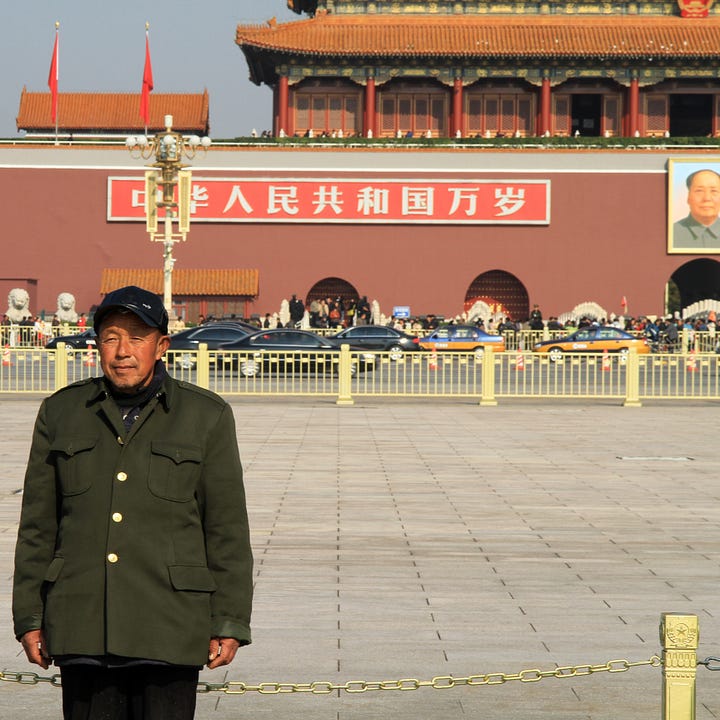
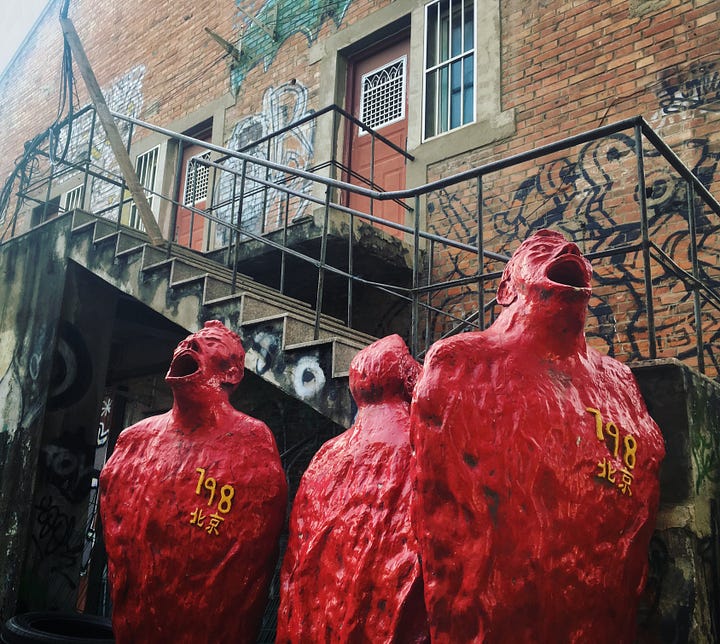
Route 1: Beijing, the Chinese Wall & Chéngdé
As recommended by our friends in Beijing, we went to Gubeikou by bus for some hiking on an old, unpolished stretch of the Great Wall of China. (For your itinerary: The Great Wall Box House.)
On the wall, we encountered very few people: one happy guy, three older men taking photographs, and two girls. All Chinese.
The next stop on this mini trip was Chéngdé. Not a common tourist spot; we did some sightseeing (there is a palace!) and we were constantly stared at. We even ended up in a nightclub, where we saw Chinese young people dancing to rock-hard techno. The boys were on one side, the girls on the other. Did they dance with each other? No, they danced with themselves in the mirror.
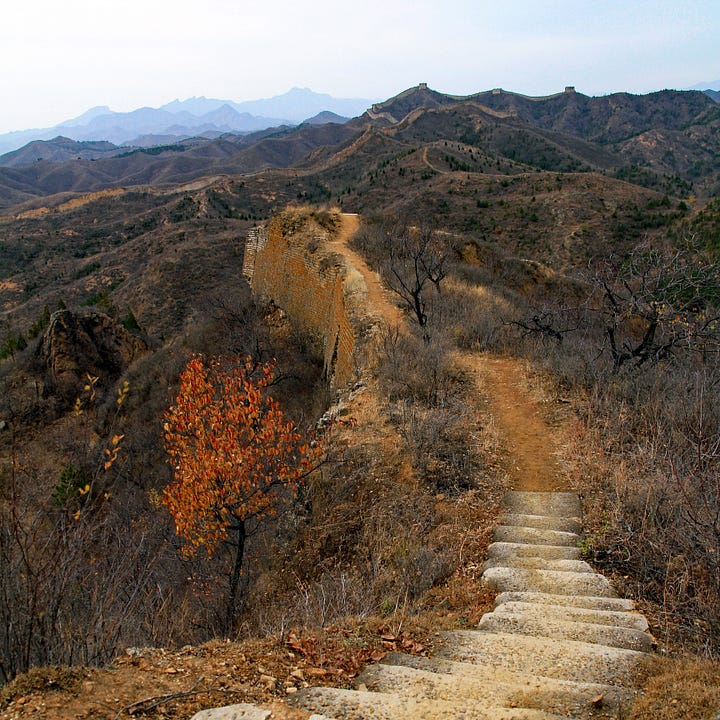
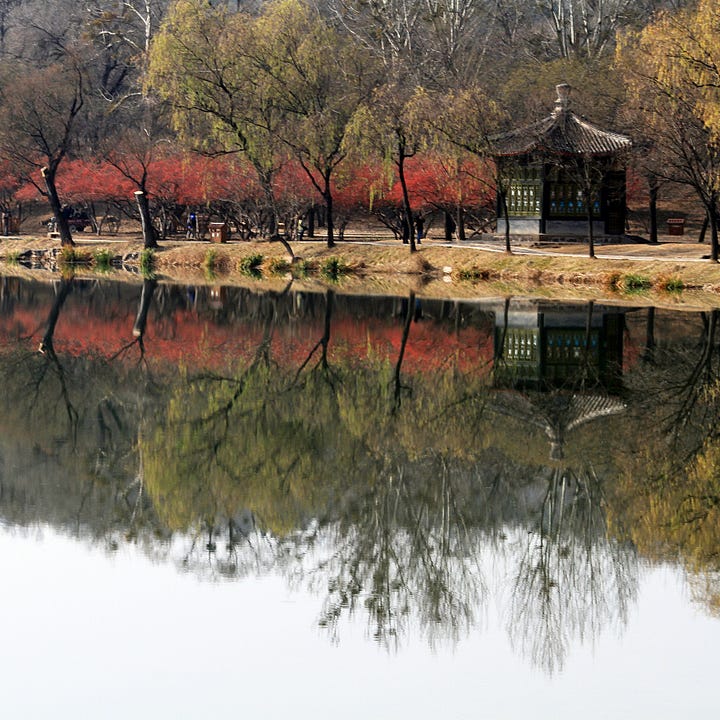
Route 2: Beijing, Datong, Pingyao & Shanghai
The train between Beijing and Datong runs parallel to the Great Wall for part of the journey. It is impressive, so make sure you have a seat by the window.
Near Datong, you can visit the Hanging Monastery and Yungang Grottoes. We joined a classic Chinese tour group for this, complete with a flag and all. We were just happy to have transport to the sites.
Pingyao is an old walled city with some newly rebuilt areas outside the wall. The Chinese government tends to use massive grey bricks for reconstruction. Inside the wall, it is a relaxed city to stay in, with temples and historic sites. You can spend the night in one of the traditional guesthouses with charming courtyards. Speaking of which, the Qiao Family Courtyard (‘Raise the Red Lantern’) is worth visiting from Pingyao.
In Shanghai, the new China meets the old. You can easily spend a few days there. From Shanghai, there are many options to travel further by train, whether by bullet train or a regular one.

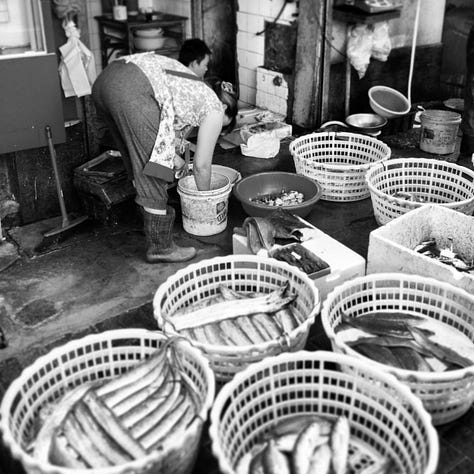
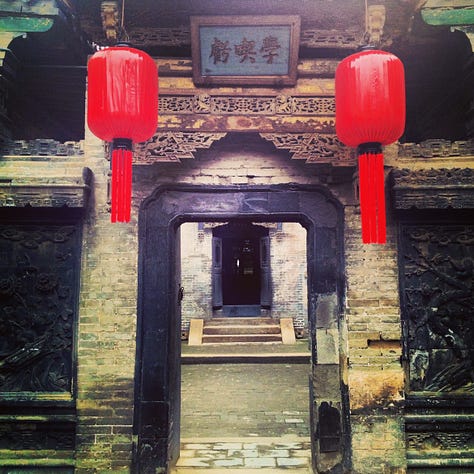
Route 3: Beijing, Xi’an & the Hunan region
From Beijing, there is a high-speed train to Xi'an, which takes only 4 to 6 hours. In Silk Road city Xi’an, the highlights are the Army of Terracotta Warriors and the Muslim Quarter with the night market. We stayed in a hostel (Han Tang House) that offered day tours to the Terracotta Warriors. It’s often better to use a local offering through a hostel than to book something unknown in advance.
From Xi’an, you can travel by train to the Hunan region to Zhangjiajie. The main attraction here are the ‘Avatar’ mountains, better known as Wulingyuan.
It was amusing to see that most visitors only went to the famous parts of the area for selfies and skipped the hiking paths. We walked those paths, and they were good and obviously quiet. We also visited the glass bridge. It’s quite a touristy thing to do, but it’s great fun to see other tourists doing crazy things on that bridge. Some people were really scared as well.
Fenghuang is a stunning old city in the Hunan province by the riverside, packed with historic sites, temples, and museums. Don’t leave without trying stinky tofu. It’s recommended to take a day tour to Dehang, another beautiful spot in the region's nature.
The last stop in Hunan before heading back to Beijing is Changsha, chosen for its convenient train connection. Not a very special city, but there is a great asset: the biggest Chinese restaurant in the world! It can host 5,000 people.
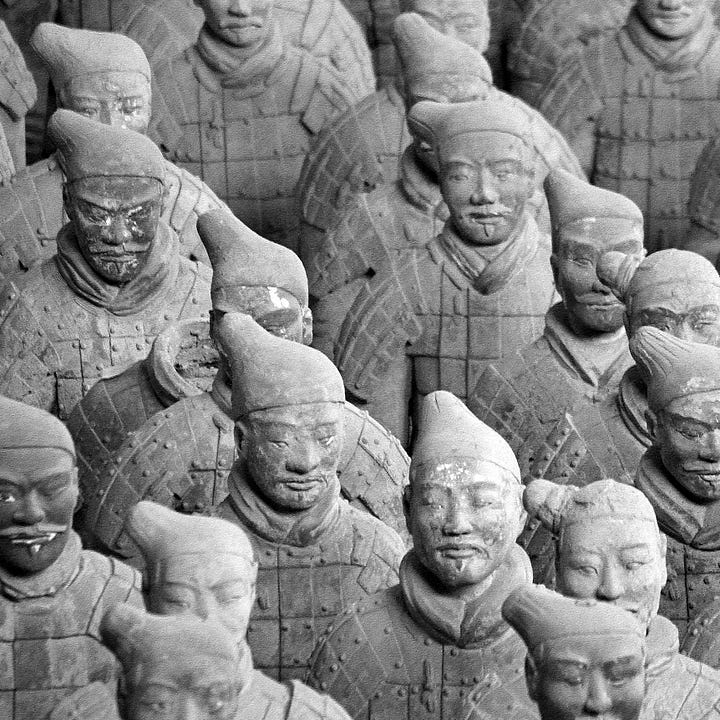

Tips for Train Travel in China
One of my favourite resources, The Man in Seat 61, offers an extensive guide to train travel in China.
How to book? There are online options like Trip.com and Chinahighlights.com. For bullet trains (check the network) and long-distance overnight trains, it’s recommended to book in advance.
Overnight trains in China are really good. Opt for a soft sleeper, which is a compartment with four beds. If there is no availability, a hard sleeper could be acceptable as well—a compartment with six bunk beds. I had one from Beijing to Lhasa (around 40 hours), and it was great fun with my new train family. I even had a grandmother who kept feeding me cookies.
There is always hot water available in China, both at train stations and on the trains. Bring tea and a flask, instant noodles, and snacks. You can buy chopsticks and spoons at any train station in China (I still have a set; they make a great souvenir!).
Go with the flow. Travelling on an overnight train is slow and relaxing. Imagine waking up by the window of a train with Chinese nature passing by. (Or some unattractive cities—I won't be overly romantic here.)
There is a whole life going on in the hallway of the train. I regularly see Chinese grandmothers with purple hair walking by. Sometimes I wonder if they are sleepwalking or if they have simply adjusted to the time they spend on the train. Their walks are cautious; they are familiar with the movements of the train.
The smell is a mixture of green tea, peeled tangerines, and instant noodles. In the hallway, people prepare noodles, stare out of the window with a cup of tea, and chew on sunflower seeds. From my cabin, I observe their behaviour and imitate them. I walk with my tea bottle towards the hot water tap. I smile, and they smile back. We have to spend some time together on this train.
Watch, read or listen
For me, China is all about the food. The Sichuan cuisine is one of my favourites. At home, I enjoy cooking from ’The Food of Sichuan’ by Fuchsia Dunlop.
On Instagram, I follow ChineseCookingDemystified for my Chinese food cravings. They also have a fantastic YouTube channel with recipes.
’Flavorful Origins’ on Netflix is a documentary series about Chinese food. Each episode focuses on one ingredient and the traditional way of cooking it. The episodes are short and quite calming.
Need some books for your long train journey? The New York Times has published a list of the 100 Best Books of the 21st Century.
I also have some Substack reads about train travel that I can recommend. ‘Off the Rails’ is a story about the Trans-Siberian journey, which was recognisable for me. The long read ‘The USA Rail Pass’ piqued my interest in travelling by train across the USA.
Sorry for this, but this song does bring back good memories:
For your agenda
The Power Station of Art (PSA) in Shanghai will host the exhibition Gabrielle Chanel. Fashion Manifesto from July 12th to November 24th, 2024. It’s the first retrospective dedicated to the work of Gabrielle Chanel in China.
For some sense of China you can visit one of the Shen Yun shows near you (click on ‘view all performances’ under ‘find tickets’). I’ve been to one myself, and it was an impressive experience. However, it can be quite pricey.
Also, check the agenda items of my former post.
My journey as a travel writer
Part 2
To push myself further in more writing and rewriting (read part 1), I attended a travel writing workshop and an introductory writing course - I was lured into it through an Instagram ad. The feedback I received from the trainers and other students was great for my ego.
More importantly, I learned some new techniques, like free writing, spider association, and setting a scene. I also gained useful insights, such as finding a good angle and understanding that it takes time to write good stories.

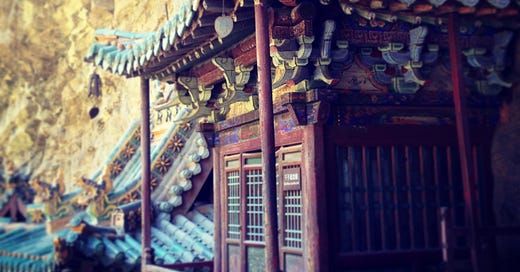




Thank you! Tempting. I heard travel in China is difficult nowadays since things need to be arranged online using some monile apps that we don’t have. Can you comment on this? And how about the practicalities of the train journey - is it relatively easy to arrange? Tickets sell online? Websites have english version? Are documents/passports being controlled often or only at the entry point to the country? Any other particular practical difficulty worth noting?